Manufacturing process
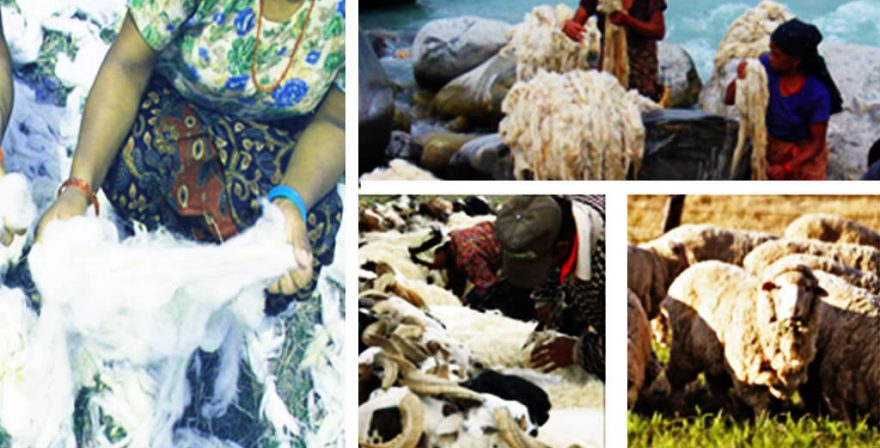
Wool Carding
Carding is a process of combing and cleaning the wool. In the process, fibers are opened and separated and each fiber is set in a straight and parallel position, and all foreign particles removed. This process also helps achieve better blending. Carding is either done manually or by machines.
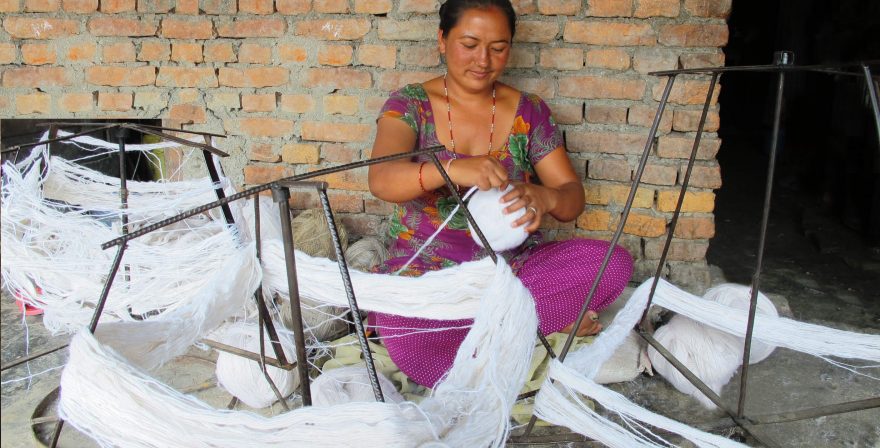
Spinning
After carding, the wool is spun into yarns of desired thickness. Spinning involves drawing and twisting the wool fibers into yarns. The average length of a fiber should be 4″ to 6″ to spin the ideal yarn for carpet weaving. Traditionally, wool is spun by hand. However, machines are also being used for this process. We strongly recommend using hand spun wool to get better quality.
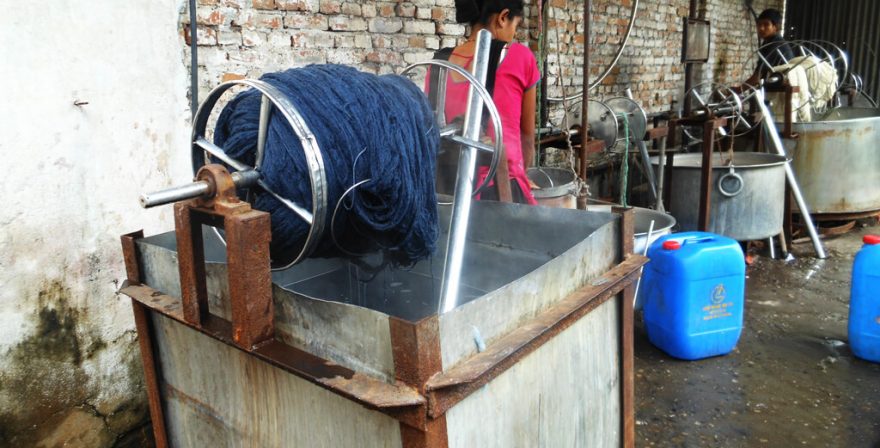
Dyeing
Wool is dyed either by chemical or vegetable dyes. Vegetable dyes give a natural look to the carpets but the colors are not very brilliant and it is more expensive than chemical dyeing. Bright colors in various shades can easily be achieved with chemical dyes. Most carpet manufacturers use AZO free chemical dyes, produced in Switzerland. Although dyeing is done manually, it is a rather complex process. Only an experienced “dyeing master” with a lot of attention to details can achieve the best results.
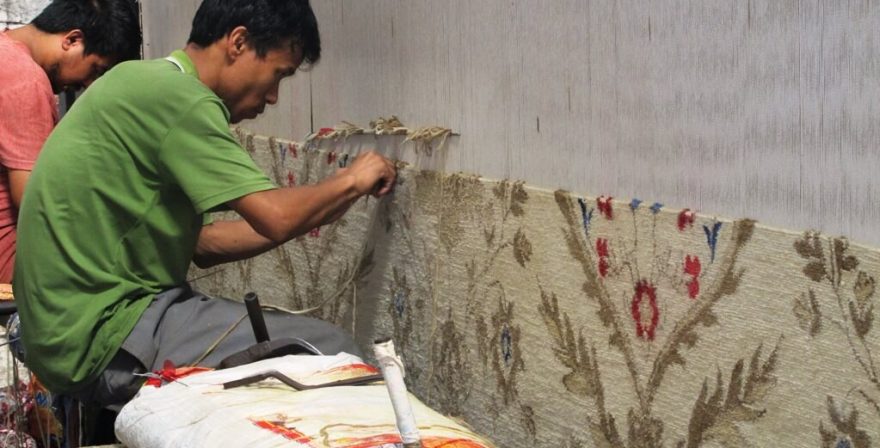
Weaving
Our carpets are hand-woven with typical traditional way. Carpets are woven on a vertical loom, which may be of wood or iron. The loom consists of two vertical poles, which are fixed to a horizontal base to keep the loom rigid. Nepalese carpets are woven in the Tibetan knotting system. The woolen yarn is tied with two warp threads at different positions with the help of a weaving rod. This process is continued breadth-wise from left to right. The cotton weft is then inserted in between the warp thread alternatively. It is then beaten with an iron hammer and the wool around the iron-weaving rod is cut with a blade. Thus, a woolen pile is formed. This process of knotting is continued until the entire carpet is woven.
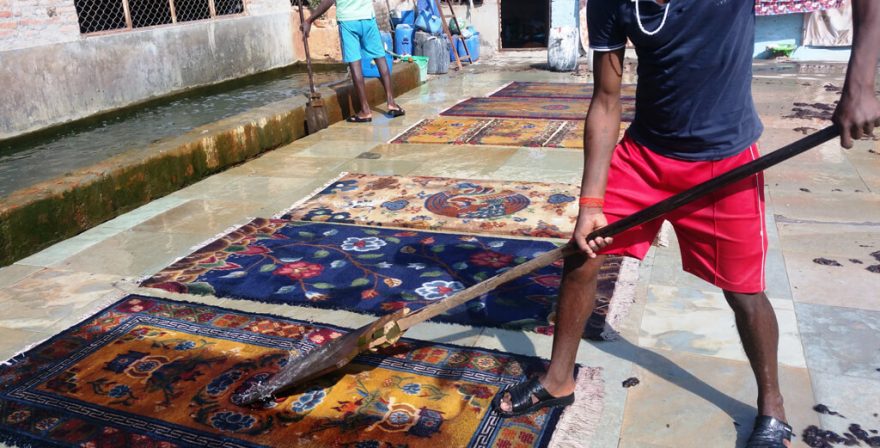
Washing
After the carpet is completed and removed from the loom, it is washed to remove dirt and to restore the original shine of the wool. Washing is also performed manually.
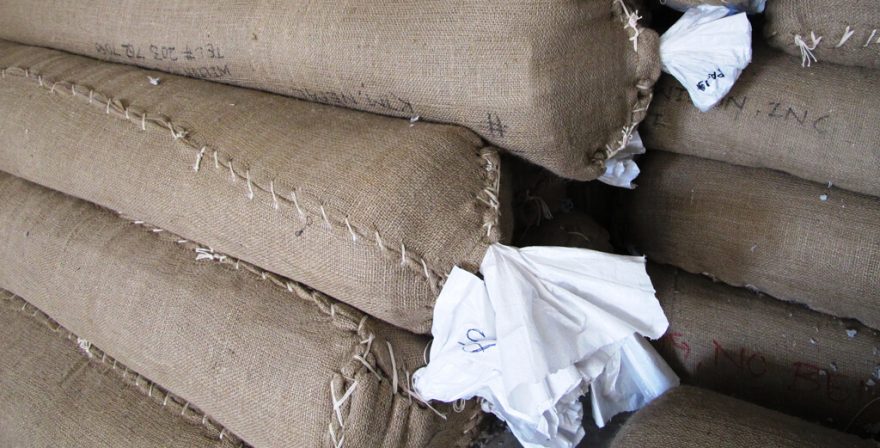
Finishing
The finishing touches to a carpet include a process of stretching of the carpet from all sides to maintain the shape of the rug. Lastly, the carpets are trimmed manually to achieve the right pile height with specially designed scissors. The designs in the carpets are also cut in physical relief according to the buyer’s demands.
